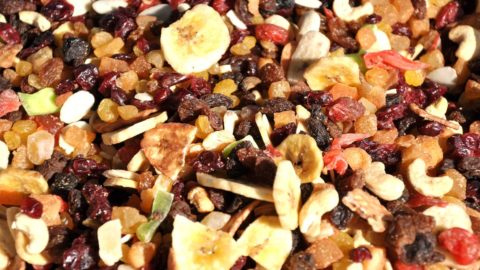Natale o Capodanno che sia, sulle tavole imbandite degli italiani, regna sovrana la tradizione. Perché stare insieme, soprattutto in Italia, vuol dire condividere l’abbondanza ed il gusto della nostra cucina. Al centro e al sud si comincia con la vigilia di Natale il 24 mentre al nord le festività iniziano con il pranzo di Natale il 25 dicembre. Si prosegue con Santo Stefano e dopo una pausa di pochi giorni si continua con il Capodanno ed il primo dell’anno. In sostanza è un banchetto senza fine, ci si sposta da una casa all’altra quasi senza interruzione e le tavole vengono apparecchiate e sparecchiate di continuo. Scarto di regali, partite a carte e tombolate accompagnano il susseguirsi delle portate tipiche natalizie che variano da regione a regione. La carbonade (carne di manzo cotta nel vino rosso) in Piemonte, brovada e muset (cotechino e rape) in Friuli, canederli in Trentino, crostini di fegatini in Toscana, passatelli in brodo in Emilia Romagna, fritto di verdure a Roma, zuppa di cardi in Molise, insalata di rinforzo in Campania, scillatelle al ragu in Calabria e le sarde a beccafico in Sicilia sono solo alcuni piatti tipici natalizi. Una costante della tradizione è la frutta secca che è presente a fine pasto sulle tavole dell’intera penisola.
Originariamente i dolci di Natale erano pressoché i pani impreziositi di frutta secca e miele, intorno al 300’ si arricchirono anche di spezie: pepe, zenzero, chiodi di garofano e cannella. Un cestino di frutta secca sulla tavola di Natale anche oggi è un classico intramontabile. In passato rappresentava la ricchezza e oggi è un simbolo di buon augurio. Noci, nocciole, datteri, fichi secchi e frutta disidratata hanno un apporto calorico elevato e in passato questo aspetto era sicuramente positivo perché garantiva l’energia in una stagione difficile dal punto di vista alimentare. Ma oggi possiamo ancora permetterci di consumare questi alimenti liberamente? Sì, in piccole quantità la frutta secca a parità di calorie di dolci natalizi contiene molte sostanze preziose per la salute e non contiene additivi, conservanti e coloranti che sono invece presenti nei prodotti da forno. Vediamo quali sono le caratteristiche della frutta secca.
I datteri sono frutti della palma da dattero Phoenix dactylifera. 100g di datteri secchi contengono 253 kcal, 63.1g di carboidrati, 2.7g di proteine, 0.6g di lipidi e 8.7g di fibra. La fibra, lo sappiamo, aiuta il transito intestinale e riduce l’assorbimento del colesterolo. I minerali presenti sono calcio, fosforo, ferro e potassio che proteggono il cuore e le ossa mentre gli antiossidanti come polifenoli e tannini combattono i radicali liberi e l’infiammazione. I datteri a causa dell’alto contenuto di carboidrati sono ottimi per chi pratica lo sport mentre non sono indicati per le persone affette da diabete e obesità. Il decotto di datteri con aggiunta di miele è un vecchio rimedio contro il raffreddore e l’infiammazione delle vie aeree. Nella Roma Antica il dattero simboleggiava la vittoria e l’onore perché la palma pur carica di frutti pesanti non si piega.
I fichi sono i falsi frutti di Ficus carica, uno dei pochi alberi da frutto in cui sono presenti gli esemplari maschili e femminili e sono questi ultimi a produrre i frutti. In 100g di fichi secchi ci sono 256 kcal, 58g di carboidrati, 3.8g di proteine, 2.7g di lipidi e un ottimo quantitativo (13g) di fibre che conferiscono a questi frutti il potere lassativo. I fichi sono un’importante fonte di calcio (186mg) e di potassio (1010mcg) che aiuta a combattere la ritenzione idrica, la pressione alta ed è fondamentale nella contrazione muscolare. Il ferro contenuto (3mg) aiuta a combattere l’anemia, la stanchezza e la debolezza. Non sono adatti alle persone obese e diabetiche sempre per l’alto contenuto di zuccheri e neanche a chi soffre di rettocolite o Morbo di Crohn perché troppo lassativi. Il fico è un frutto conosciuto fin dall’antichità al quale venivano attribuite le proprietà afrodisiache e fertilizzanti ribadite anche della Scuola Medica Salernitana “… veneremque vocat, sed cuilibet obstat” (provocano lo stimolo venereo anche a chi vi si oppone). La legenda di Romolo e Remo narra che i due fratellini erano nutriti dalla lupa sotto un albero di fico.
Le noci sono frutti oleosi dell’albero Juglans regia. I valori per 100g sono: 689kcal, 5.1g di carboidrati, 14.3g di proteine, 68.1g di lipidi e 6.2g di fibra. La parte più preponderante dunque sono i grassi e questo spiega il loro introito calorico alto ma si tratta di grassi per lo più insaturi: omega 6, omega 3 e monoinsaturi che risultano molto utili per combattere il colesterolo e abbassare la pressione, grazie all’arginina che è un precursore del ossido nitrico, un potente vasodilatatore. Un giusto quantitativo di questi grassi aiuta a mantenere sotto controllo la glicemia, l’infiammazione e la circolazione sanguigna. Inoltre, insieme allo zinco e vitamina E contenuti nelle noci i grassi PUFA migliorano la pelle e capelli. Gli omega 3 rinforzano la memoria e le capacità cognitive, combattono la depressione e insieme agli antiossidanti prevengono: l’insorgenza dei tumori, i radicali liberi e in generale l’invecchiamento.
Le noci sono una buona fonte, di magnesio che partecipa a tantissime reazioni chimiche del nostro corpo e di vitamine del gruppo B che sono importanti nei periodi di particolare stanchezza e aiutano il sistema immunitario a mantenersi efficiente soprattutto nei cambi di stagione. L’opera medioevale Signatura Rerum assegnava le proprietà terapeutiche alle piante sulla base della loro somiglianza a specifiche parti del corpo umano. Il gheriglio delle noci risulta simile al cervello, infatti, secondo questa opera era ottimo per curare le ferite al capo, il mal di testa, le malattie mentali e in generale era benefico al cervello. In Cina le noci sono tornate ad essere uno status-symbol e vengono collezionate, più sono antiche, grandi o simmetriche, più sono ricercate e possono arrivare a costare davvero molto.
Le nocciole sono frutti dell’albero Corylus avellana appartenente alla famiglia delle Betulaceae. In 100g ci sono 655kcal, 6.1g di carboidrati, 13.8g di proteine, 64.1g di lipidi e 8.1g di fibre. Sono simili alle noci, anche loro contengono molti grassi insaturi, le vitamine del gruppo B, vitamina A, E e sali minerali e quindi i benefici per la salute che derivano dal consumo regolare di questi frutti sono quelli citati prima. Nell’Antica Roma la pianta del nocciolo veniva donata per augurare la felicità mentre in Francia questo dono agli sposi era simbolo della fertilità.
Una pratica antica è quella di attivare la frutta secca e renderla più digeribile mettendo in ammollo per almeno 24 ore le noci in maniera tale che si attivi il processo di germinazione che riduce la quantità di amido e fibra e aumenta la quantità di proteine e vitamine.
A questo punto è chiaro che la frutta secca fa bene alla salute ma quanta ne dovremmo mangiare? La porzione di fichi e datteri è circa 40 grammi mentre quella di noci, nocciole e mandorle è di 20 grammi. Al di fuori delle feste è importante consumare regolarmente noci, nocciole e mandorle, magari come spuntino a metà mattina che ci sazia permettendoci di arrivare al pranzo senza i “morsi della fame”. Durante le feste invece sono un buon sostituto del dolce che alla fine del lauto pasto risulta veramente eccessivo. In alternativa le noci insieme alla frutta fresca potrebbero benissimo sostituire un pasto precedente o successivo a quello in grande stile con i famigliari e amici e aiutarci almeno in parte a tamponare le scorpacciate natalizie.
Buone Feste!





